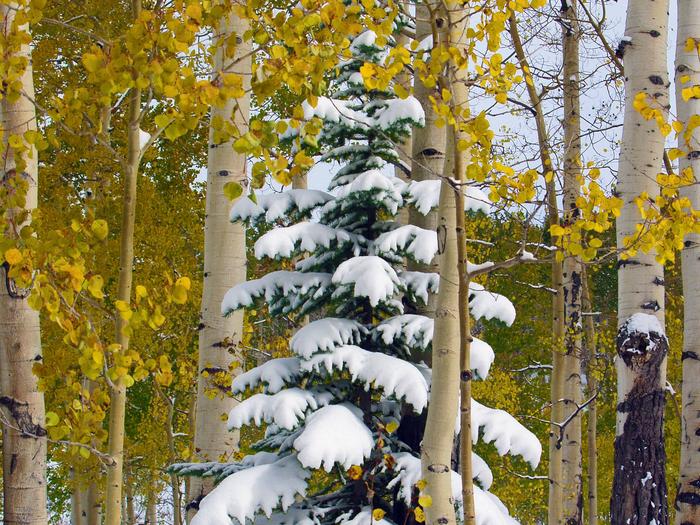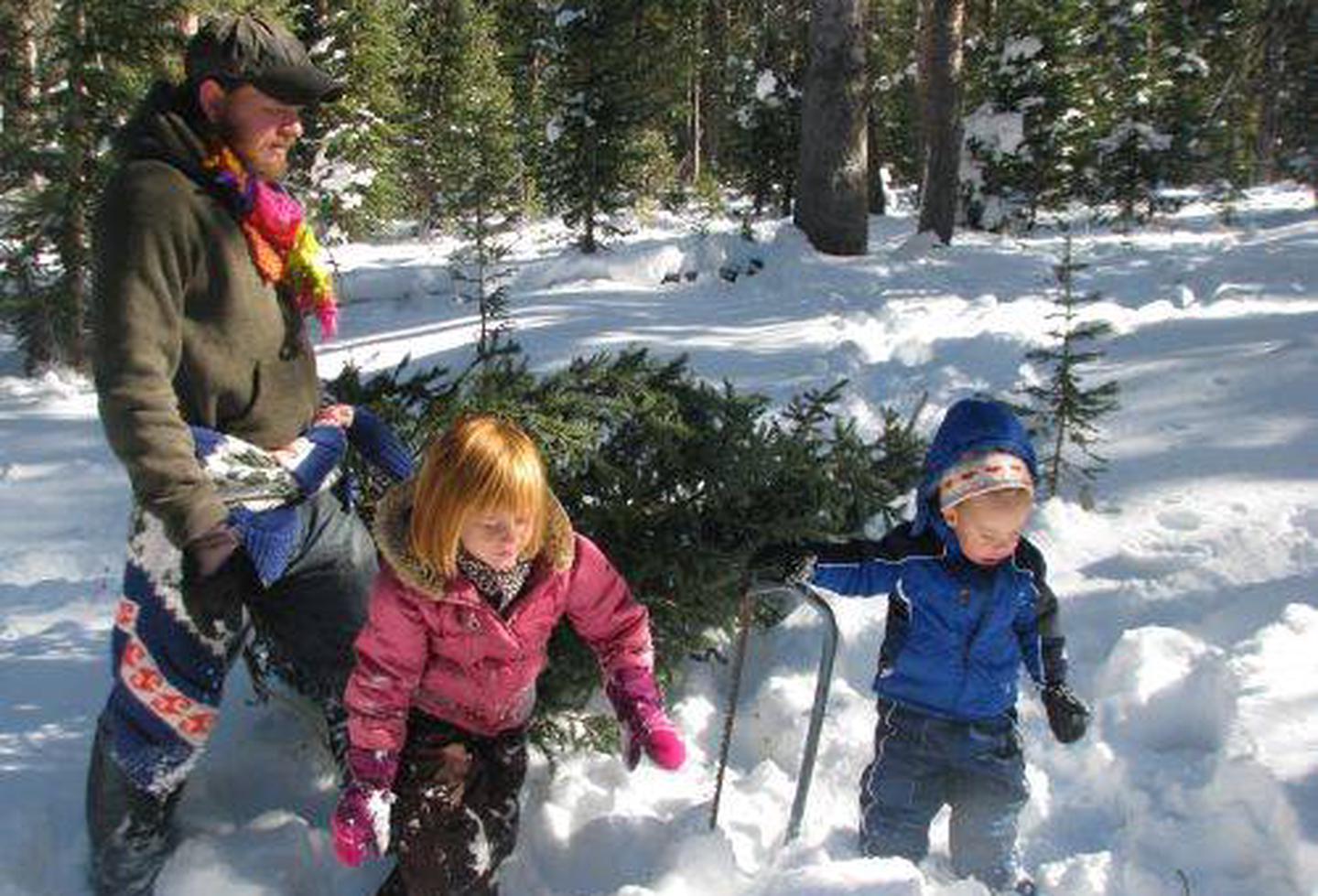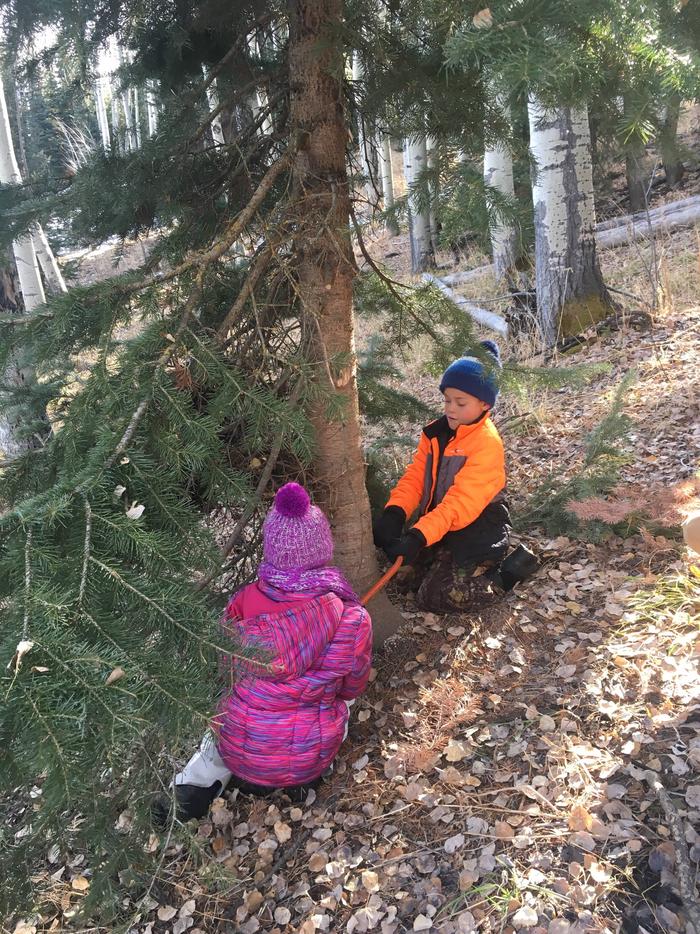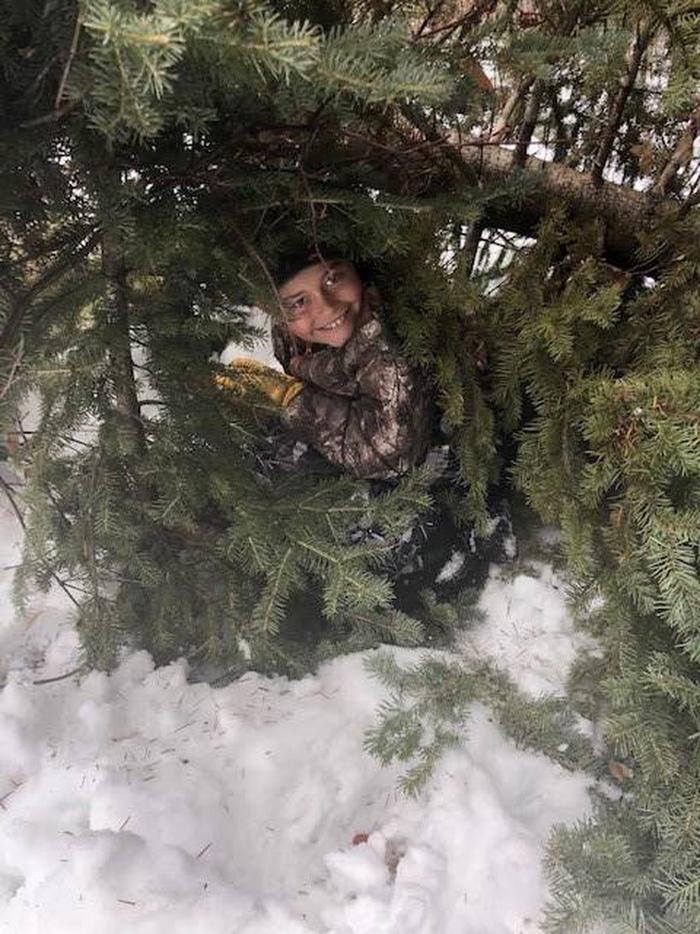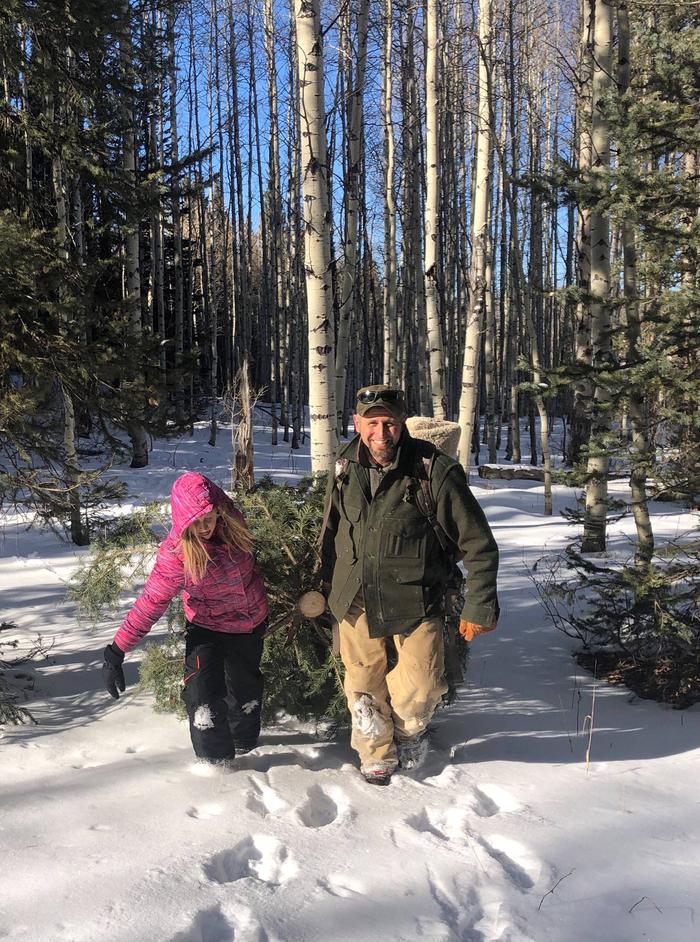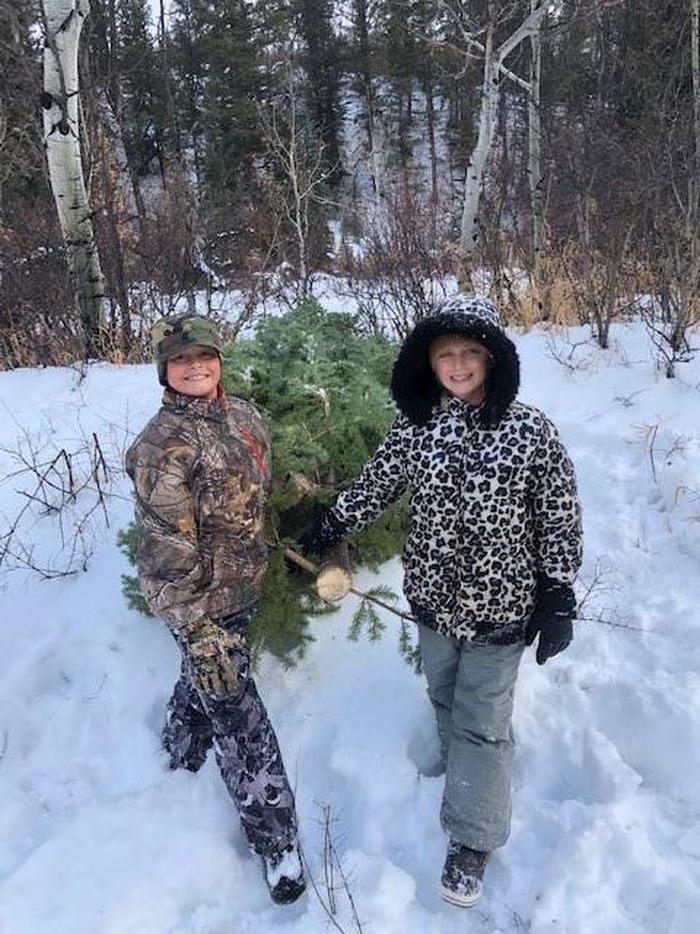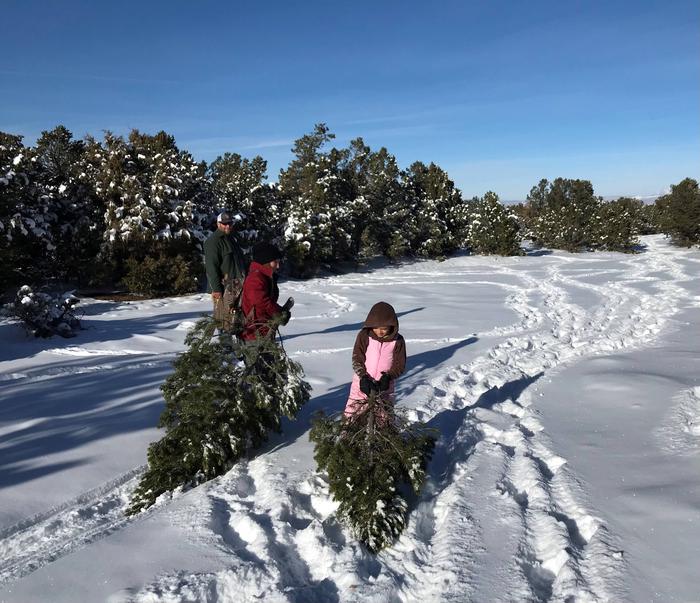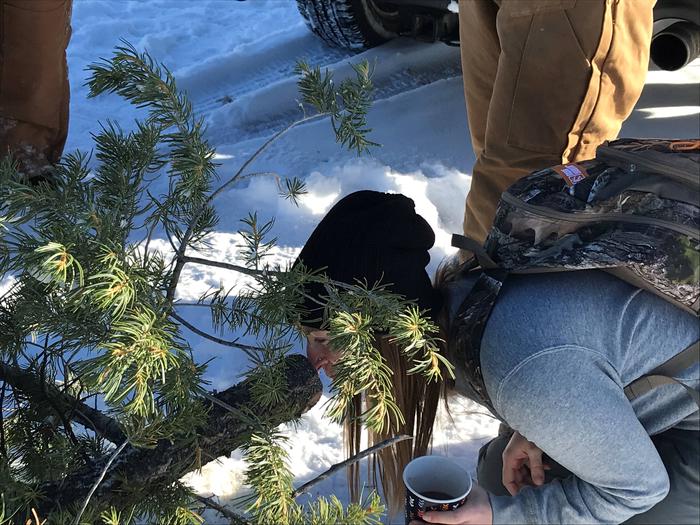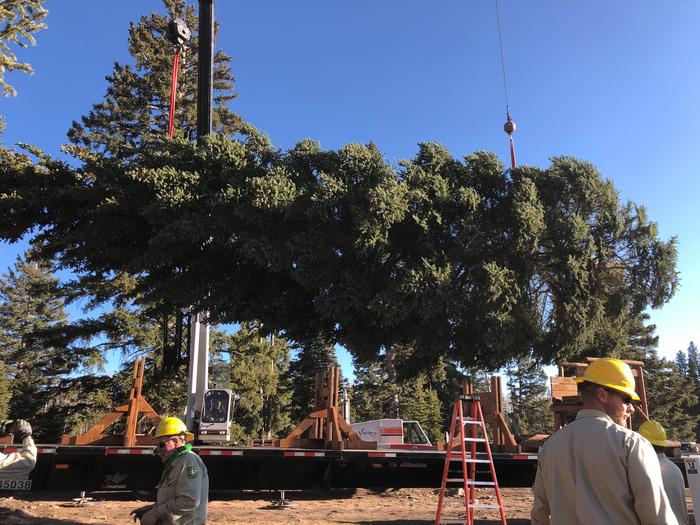Grand Mesa, Uncompahgre and Gunnison National Forest Christmas Tree Permit
Grand Mesa, Uncompahgre and Gunnison National Forest
Coloradans have been cutting their very own Christmas trees on the GMUG National Forests for generations. Lifelong memories are built during these special times and we are happy to help with any information you'll need to make this trip a safe and enjoyable.
This permit allows you to cut a Christmas Tree within designated areas of the Grand Mesa, Uncompahgre and Gunnison National Forests.
Please be sure to read all the tips and adhere to the guidelines when selecting your tree.
For more information, please visit the Grand Mesa, Uncompahgre and Gunnison National Forests' Christmas Tree page
Need to Know
Selecting Your Tree
Each forest has limitations on the size of the tree you can cut and the species of trees that are permitted. See below to help you measure and choose a tree that meets your permit's guidelines.
Tree height: 20 feet maximum
Stump height: 6 inches maximum
Stump diameter: 6 inches maximum
Take the whole tree. Do not remove the top of the tree; cut down the entire tree.
All live limbs attached to the cut stump should be removed to prevent regrowth.
If snow is on the ground, remove it from around the stump so you can accurately measure the stump and tree height.
Subalpine fir, Engelmann spruce, Lodgepole pine, Bristlecone pine, Douglas-fir, Ponderosa pine, Pinyon pine and Juniper - local species cutting restrictions may apply - ask at local district offices.
Where to Cut Your Tree
Cutting is permitted only on the federal lands for which the permit is issued.
Do not cut within administrative sites, picnic areas, campgrounds, trailheads, scenic pullouts, tree plantations, timber sales, wilderness areas, within and/or adjacent to cross country ski areas, along Forest trails and/or downhill ski areas, other areas signed or mapped as “closed to cutting” or on other areas specific to each District. Know before you go - Contact your local Ranger District office for any additional restricted areas.
All Grand Mesa, Uncompahgre and Gunnison National Forests Travel Plan Management Restrictions apply - obtain Motor Vehicle Use Maps (MVUMs) at local Forest Service offices.
Keep motorized vehicles on designated routes that are open to the mode of transportation you are using.
Do not drive on designated and groomed snowmobile trails - designated routes are closed when there is sufficient snow to maintain trail grooming with snow equipment.
Park in a safe location off of the road right-of-way where there is sufficient room to access to your vehicle with your tree. Do not block gates.
Watch for logging truck traffic on plowed forest roads.
Follow all Leave No Trace guildlines.
Planning Your Trip
Helpful Cutting Tips
Carry your tree carefully out of the woods. Dragging the tree will rub off needles and bark.
If the tree is too big to transport inside of your vehicle, wrap it in canvas to prevent wind damage.
Once home, cut the bottom of the trunk off and place the freshly cut trunk in a bucket of water. Replenish water regularly.
Tools you will want to consider bringing with you include a measuring tape to ensure you select a tree that fits in your home; handsaw to cut your tree; gloves to protect your hands; boots to protect your feet; a tarp to sit on and/or to move your tree once it's cut; and rope or straps to secure your tree to your vehicle.
Choose a tree from a dense forested area, which will give the remaining trees more space to grow.
Cut the leftover branches from the stump and scatter them.
How to Plan Your Trip
Before you leave home, be sure to measure the space where you plan to place the tree in your home (height and width), and measure the space in your vehicle where you will be transporting the tree.
Cell service may be spotty or unavailable. Be sure someone knows where you are and when to expect you back.
Check the latest weather conditions, forest advisories and road closures before you leave on your trip.
Bring a map with you. Don’t rely on GPS because it may not be up-to-date with Forest Service Roads. Roads may not be plowed. Carry tire chains, shovel(s) and a tow chain.
Dress warmly and take extra dry clothes. Expect winter weather, including cold temperatures, snow and winds. Be sure your vehicle has a full tank of gas. Bring a spare key and give it to someone else in your party. Don’t get locked out of your car. Park in areas so that traffic can pass by safely, and do not block gates.
Bring plenty of food and water with you as well as an overnight survival kit in case you become stranded.
Start your day early. Be sure to find your tree and leave the woods before dark.
We don't recommend bringing your pets but, if you do, they must be on a leash.
